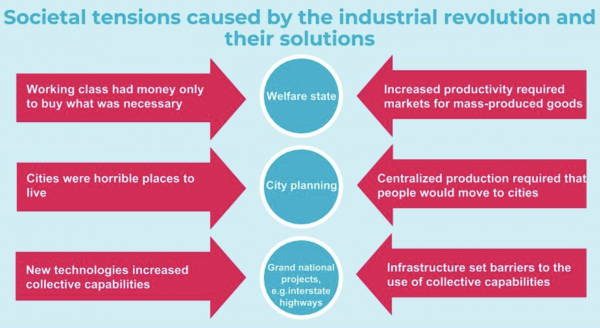Technology is developed simultaneously in different contexts, including virtual reality, artificial intelligence, robotisation, nanomaterials, and energy technology. All these developments have potentially significant social consequences, as digital platforms displace traditional companies, computers displace humans, and new devices displace traditional channels of communication. The risks and opportunities related to advances in…
Technology is developed simultaneously in different contexts, including virtual reality, artificial intelligence, robotisation, nanomaterials, and energy technology. All these developments have potentially significant social consequences, as digital platforms displace traditional companies, computers displace humans, and new devices displace traditional channels of communication.
The risks and opportunities related to advances in technology are so extensive that technological development can’t be left solely for companies and engineers. Technology should be considered as a social issue as well: it’s changing both the way societies are organised and how they should be organised.
To share the benefits of new technologies more equally, we can no longer focus solely on developing technology: we need to change social institutions as well.
Big technological advances, while having beneficial consequences, can also alter and severe societal tensions. There are historic examples of this. The advent of the steam engine during the Industrial Revolution brought with it more efficient travelling and factories, but also pollution and later climate change. Rapid urbanisation led to the appearance of both slums and creative cities, and while new jobs were created for millions of people, we were also left with new social problems such as unemployment and urban poverty.
Those problems were not solved until new societal institutions were created. And the full potential of new technologies couldn’t be utilised until the tensions were solved. Visiting Professor of London School of Economics, Carlota Perez has described this as life and times of a technology.

Societal problems created by the Industrial Revolution were eventually mitigated by social security systems ensuring that the increases in industrial productivity also increased the wellbeing of workers. This also meant that more people were able to afford all the new products created with new technologies which grew the economy and further accelerated the development of new technologies.
We can reflect this back to the technological developments of today. As we are in the midst of a transition to a post-industrial society, we need to shape current social institutions and create new ones that address current and future societal tensions. With adapting and reorganizing our societies we can make sure that we release the full potential of new technologies.
Related blogs
This blog series presents four theses on how to make sure that the future is a hyperconnected paradise rather than a dystopia. Each post presents one of the four theses that bring to life the Nordic promise of a hyperconnected society:
Introduction: How to build trust in the world, where tech giants are more powerful than governments?
Blog 2: We let platforms govern our lives but how to govern platforms?
Blog 3: Limited Liability Corporation is Dead, Long Live Responsible Ownership
This blog series is based on Demos Helsinki’s publication “The Nordic Digital Promise: Four Theses on a Hyperconnected Society”
Contact
Writer: Johannes Mikkonen
Please have a contact with Johannes if you want to discuss the theme and how digitalisation changes your organisation. Follow Johannes also in Twitter.

Climate resilience and security: Reflections from the UK and Finland
Event
March 20, 2025